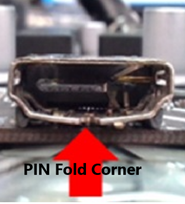Related Topics
[Motherboard] Troubleshooting - No Power/No Boot/No Display
Related Topics
[Motherboard] ASUS Q-LED Troubleshooting: No Power/No Boot/No Display
[Motherboard] Q-LED Core Troubleshooting: No Power/No Display
[Motherboard] No Power/No Boot/No Display - Troubleshooting
When you press the power button to turn on the computer but there is no display on the monitor, please follow the below steps to troubleshoot:
4.1 Using the CPU's integrated graphics output port (internal display)
4.2 Using the output port on a dedicated graphics card (external display)
6. Test with minimal components, isolating the possible cause
a. Please check if the connection of the power cord and electric socket are well connected as shown below. If there is a main power switch on the extension cord, please make sure it is switched on. If it still can't power on, please replace the extension cord or electric socket.
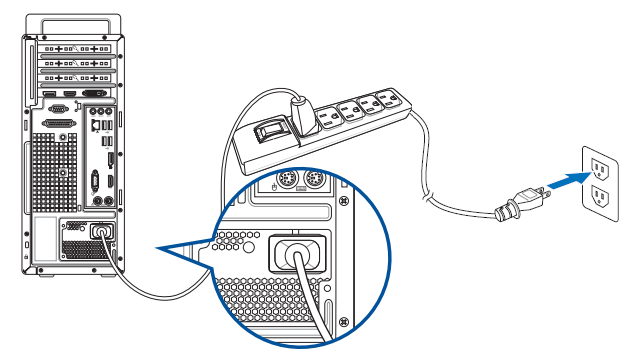
b. Make sure the power switch at the back of the power supply is on, as shown below:
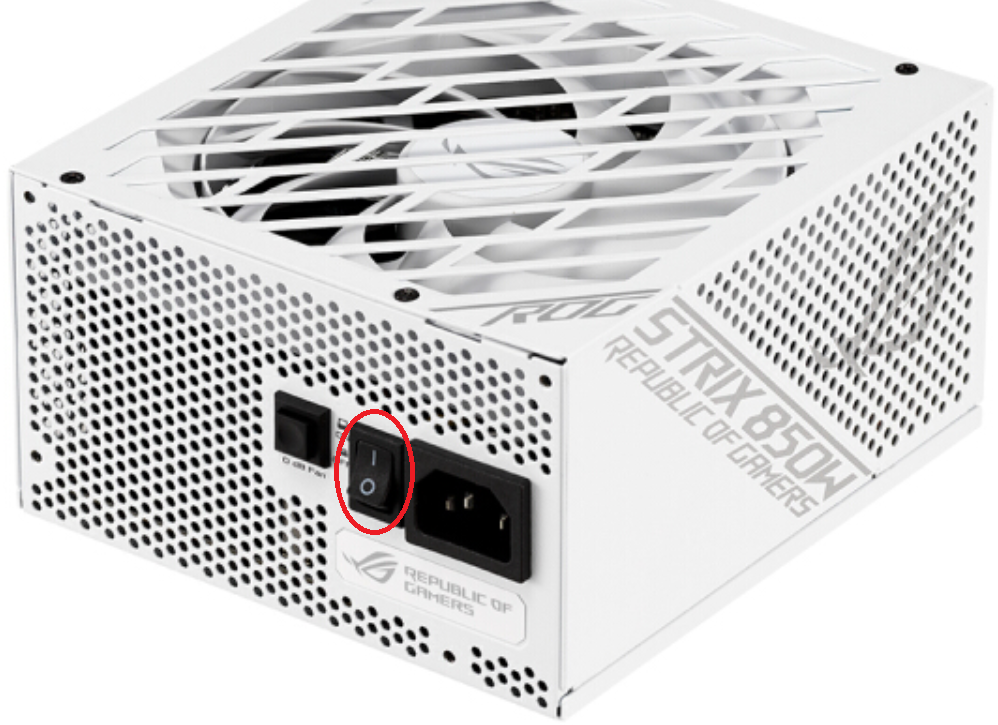
c. Check the power cable of power supply is correctly connected to ATX power connectors. Some motherboard may contain 8-pin EATX12V_1, 4-pin EATX12V_2 and 24-pin EATXPWR, we suggest to connect all three connectors to the power supply.
(Model name of photo below is PRIME Z690-P-CSM)
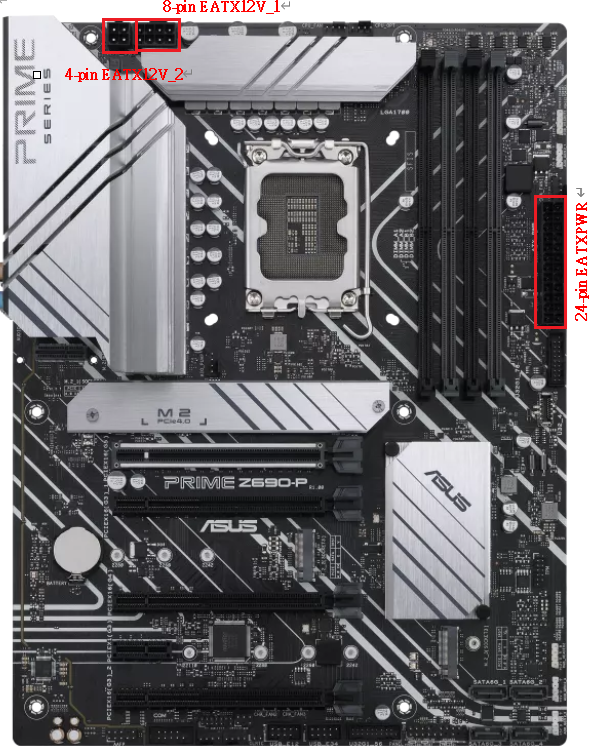
d. Replace a known good power supply
1. Enter ASUS Download Center to check compatibility of the motherboard and the CPU.
a. Input your model name, click [CPU/Memory Support] (Example: ROG CROSSHAIR VII HERO)
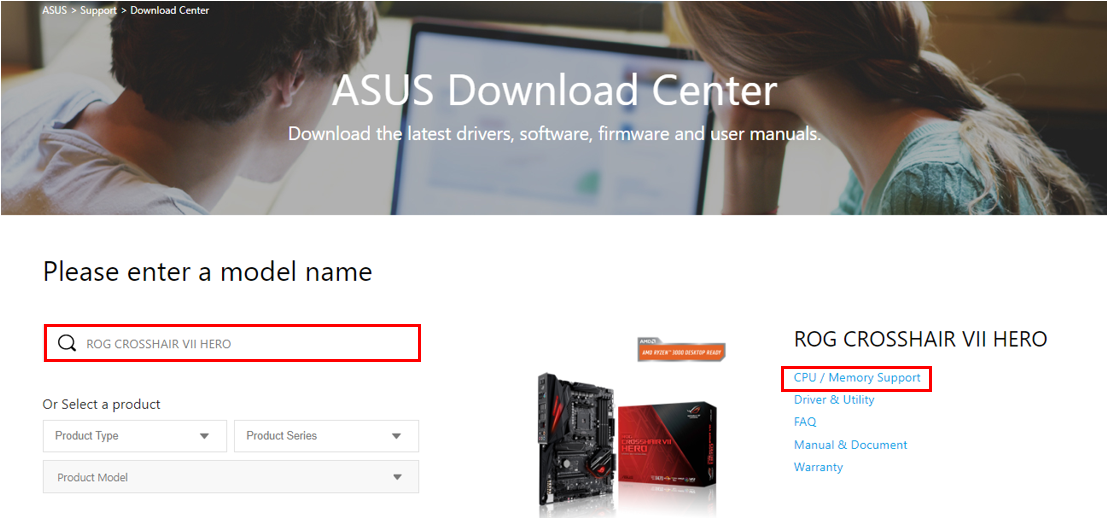
b.Click [CPU Support] and check if your CPU is in the QVL list for compatibility as below, and check if the BIOS version is as the recommended one or the later version than recommended.

c. If you have confirmed your CPU supports on-board graphics, but still have no display, please try to re-install CPU and check if the CPU pin or CPU socket is dirty as below. If yes, please clean it and try again.
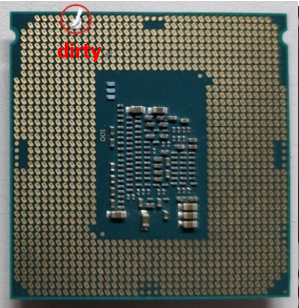
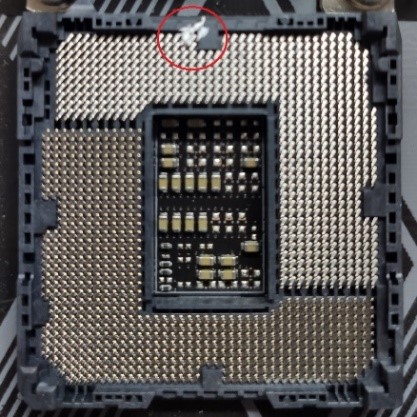
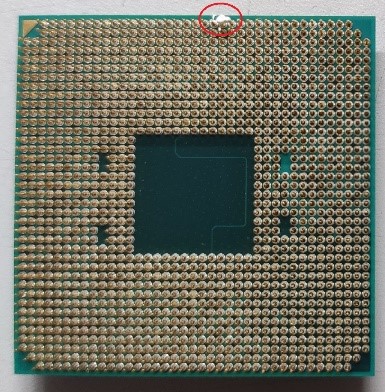
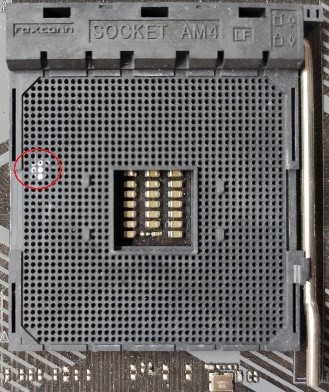
d. Check if CPU pin is broken. If yes, please replace a known proper CPU.
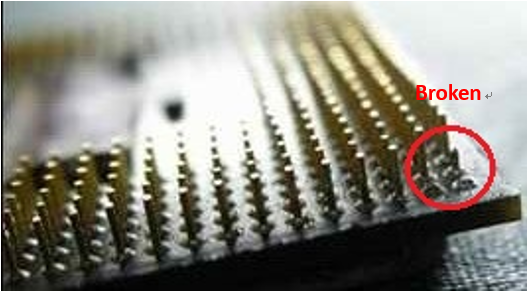
a. Re-install the memory, and check the memory is fully installed as shown below.
Incorrect case:

Correct case:

b. If it has no display when you install two or more memory, please check whether problem can be solved by installing only one memory . Then try to install the other memory to eliminate memory problem.
c. Please replace your DRAM with the one on Memory support list(QVL list)
You can refer to How to query Memory QVL list
d. Please try as [recommended memory configurations] in user manual of the motherboard:(Example: PRIME Z790-P WIFI)
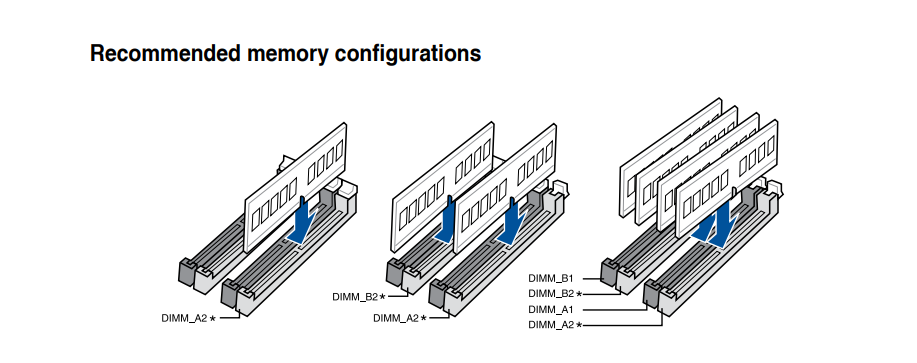
e. How to install memory on the motherboard and precautions? Please refer to FAQ: [Motherboard] How to install memory on the motherboard and precautions
1. First, confirm whether the computer display is connected to the CPU's integrated display output port (internal display) or an output port on an independent graphics card (external display)。
CPU integrated display output port (internal display): HDMI/DP PORT CPU internal display output
Independent display card output port (external display): HDMI/DP PORT CPU independent display card output
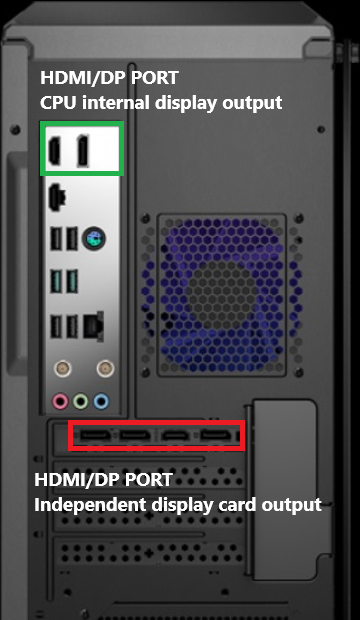
(Note: The outputs of the graphics card may vary from its series and models)
4.1 Using the CPU's integrated graphics output port (internal display):
a. First, confirm whether the CPU supports graphics. Refer to the related FAQ link: [Motherboard] How to confirm whether the CPU supports integrated graphics output (internal display)。
b. If the CPU supports graphics, configure the motherboard BIOS as follows:
During boot, press DEL or F2 to enter BIOS Advanced Mode. Select System Agent (SA) Configuration->Graphics Configuration->iGPU Multi-Monitor and confirm that it is set to Enable. Press F10 to save the BIOS settings and reboot.
(If no display appears during boot, it is recommended to use an external graphics card to configure the BIOS. For the BIOS configuration path, refer to the motherboard manual.)
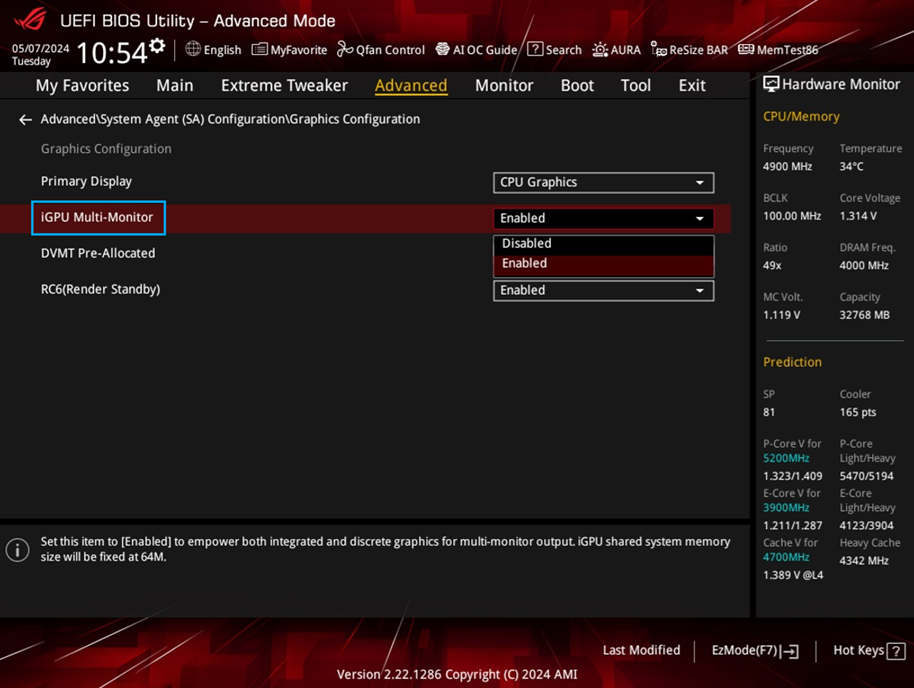
C. Please make sure that the computer display is connected to the CPU integrated display output port (internal display).
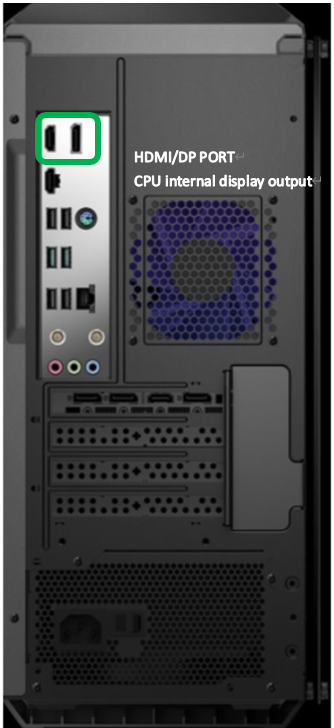
4.2 Using the output port on a discrete graphics card (external display):
a. If the connected discrete graphics card has a power connector, please confirm that it is properly plugged in. Please refer to the related FAQ link [Motherboard/Graphics Card] How to Install a Graphics Card on a Motherboard
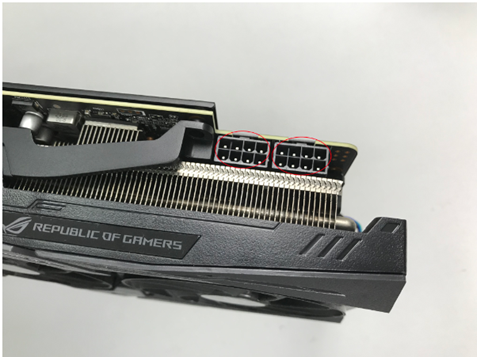
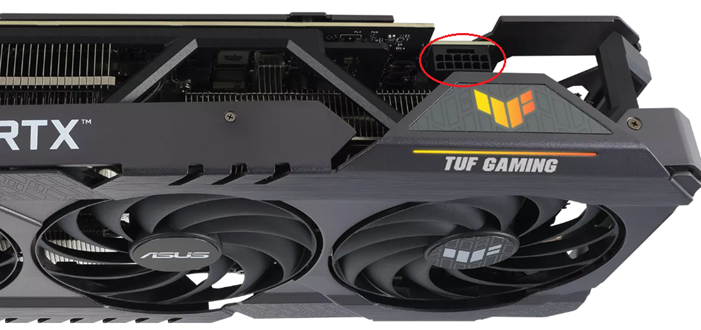
b. Please try reinstalling the graphics card and confirming that the graphics cable is properly connected to the graphics output port.
*No special BIOS settings are required*
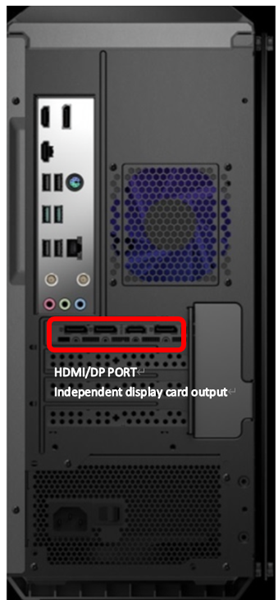
a. Please make sure monitor is powerd on normally and check the indicator light of monitor is on to ensure the power cable of the monitor is connected correctly. Make sure the external power cable is powerd on normally as shown below. Please try to switch on, switch off and switch on the power of the socket, check if monitor can display. If you switch off and switch on the monitor, monitor shows ''no signal'',it indicates the monitor is powerd on normally.
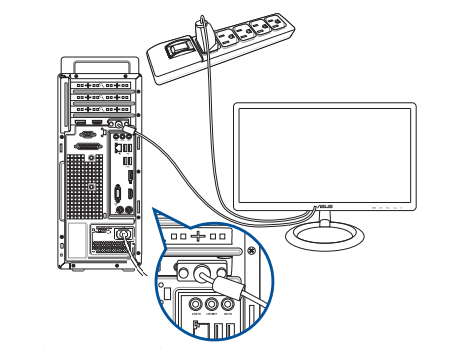
b. Verify that the signal cable (VGA/DVI/HDMI/DisplayPort) is properly connected to the monitor. Also, ensure the other end of the cable is securely connected to the computer's display output (either internal motherboard display or graphics card). You can also try reseating and unseating both ends of the cable to confirm.
c. Verify that the monitor's display output is set correctly. For example, if the computer is currently connected via DP, select DP as the monitor's display output, as shown below.
(Example: PG27AQN)

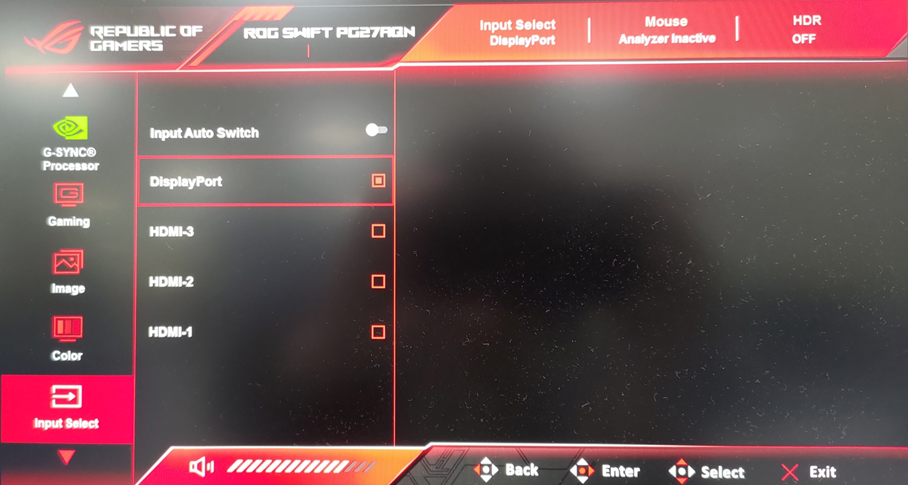
d. If there's still no display, we recommend replacing the Display Port cable with another output cable (e.g., VGA/DVI/HDMI) to ensure the problem isn't caused by a damaged cable (and make sure none of the port pins are bent)。
e. Connect the monitor to another computer to verify normal output. To rule out monitor issues, refer to LCD Monitor Troubleshooting - Screen is Black/Blank/No Power/Power Light is On/Off.
6.Test with minimal components, isolating the possible cause
If the above solutions still cause a no display issue, please follow the instructions below to remove all external devices and verify again.
a. Leave the CPU, CPU cooling fan, one memory card, power supply, and graphics card connected to the motherboard.
b. Remove all the USB devices and external cards from the motherboard, including the mouse, keyboard, USB flash disk, SSD, external PCI-E Cards, etc.
c. Remove all the cables connected to the Motherboard ,including LAN cables, audio cables. Only leave one monitor connected to verify the display.
d. Then try to re-boot the computer. If it can power on normally, the problem may be from the removed external devices. Re-connect the external device one by one until you find which external device or cable causes the problem.
7.If it stilll has no display, please power off and try to: Clear CMOS
Note: if you adjust the BIOS option (for example, adjust the voltage or other options due to overclocking), you can also try to clear the CMOS recovery BIOS option and restart if there is no display at startup
8.If your motherboard supports ASUS Q-LED function, please try: ASUS motherboard troubleshooting via Q-LED indicators
9.You can also troubleshoot by the sound from the buzzer of the motherboard, refer to: buzzer to troubleshoot monitor display issues
*If the problem still can't be fixed, please contact ASUS Product Support*
Q1. My computer boots normally, but the screen is blank.
A1: You can refer to the official FAQ: LCD Screen Troubleshooting - Screen Black/Black/No Power/Power Light On/Off
Q2. What should I do if the display cable won't plug into the motherboard's HDMI or Display Port?
A2.1. Check that the cable is plugged into the correct connector.
2. Check the connector for any foreign objects or damage to the pin corners. Remove any foreign objects. If the pin corners are bent or damaged, we recommend sending the system for repair.

